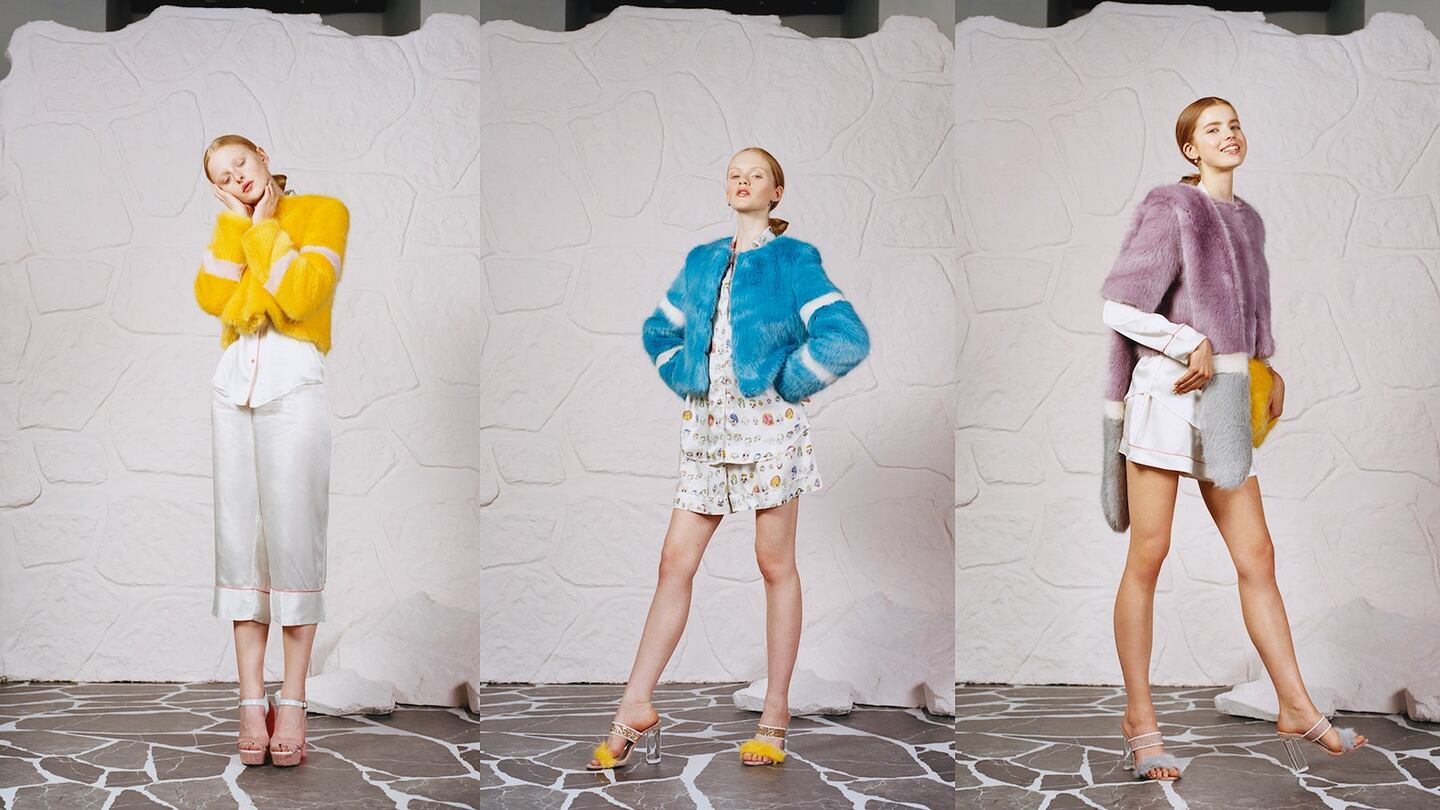
The Business of Fashion
Agenda-setting intelligence, analysis and advice for the global fashion community.

Agenda-setting intelligence, analysis and advice for the global fashion community.

LONDON, United Kingdom — Since I started Shrimps in 2013, I have found the conversation on fur versus faux fur fascinating. I specifically decided to use faux fur for my label for a number of reasons: my personal views, price, colour and creative flexibility.
I cannot wear real fur, as I am allergic to most of it. So designing with it was never an option for me. But, allergies aside, for personal reasons, I would not work with or wear real fur either — I greatly value animals and am conscious of my personal impact on their wellbeing.
However, I don't judge others that do. Fur has been worn for centuries for reasons linked to both climate and fashion. But given the capabilities of modern technology, you can now produce faux fur with the same level of softness, quality and warmth as the real thing, which makes the argument for animal-based fur much harder.
Essentially, my brand has been made possible due to these developments and I've been fortunate to have been introduced to a supplier that produces a remarkable quality of faux fur. There is no matting or crispness and it feels as soft as the real thing. But the biggest challenge, aside from sourcing the perfect faux fur, is finding factories that can work with such a unique fabric. They are highly skilled specialists — and they're hard to come by.
ADVERTISEMENT
Another argument for faux fur is price. Historically, fur coats and accessories are very expensive, but I wanted my brand to be affordable to my friends (in their mid-twenties). Our Autumn/Winter 2015 coats will retail at a maximum of around 895 pounds (about $1400). At other brands, the cost of real fur coats can stretch into the tens of thousands of pounds. As a result, faux fur can be more of a fashion item, because a faux fur coat is affordable enough to be a seasonal purchase, compared with a real fur coat, which you might only buy once in a lifetime.
I’ve observed that in cities like London, real fur remains a controversial topic and few publications will shoot it, while faux fur has become much more established in fashion’s vocabulary. What’s more, faux fur, which has also been associated with cheapness in the past, is now discussed in terms of degrees of quality and luxuriousness, much in the same way as real fur. It is being taken seriously on its own merits, not just as an ‘alternative’ to fur, as demonstrated by the rise in faux fur styles on the Autumn/Winter 2015 runways and on the high street.
Shrimps started out as a decision to make a handful of faux fur Breton coats in bright colours. Faux fur, I find, also allows for far more creativity — you can work with more colours, shapes, prints and patterns. The fabric is soft yet sturdy, which means you can experiment with panelling and unique shapes that would not be so easy with delicate real fur. You can also have lengthier trials and sampling processes, knowing you are not harming animals.
The responses we’ve received from buyers have been wonderful and I was surprised to be approached by stockists from countries like the US, Italy and Russia, which are historically strong markets for real fur.
Ultimately, I don’t think that faux fur is a trend; I think it’s a lifestyle that clients and buyers are increasingly comfortable embracing. A number of our stockists, including Selfridges and Net-a-Porter, do not stock real fur. This sends a vital message. Modern technology has paved the way for faux fur to be unique and luxurious in its own right. I hope that one day it will become the natural decision for people thinking of buying a winter coat.
Hannah Weiland is the founder and designer of London-based label Shrimps.
The views expressed in Op-Ed pieces are those of the author and do not necessarily reflect the views of The Business of Fashion.
Join the discussion on BoF Voices, a new platform where the global fashion community can come together to express and exchange ideas and opinions on the most important topics facing fashion today.
How to submit an Op-Ed: The Business of Fashion accepts opinion articles on a wide range of topics. Submissions must be exclusive to The Business of Fashion and suggested length is 700-800 words, though submissions of any length will be considered. Please send submissions to contributors@businessoffashion.com and include ‘Op-Ed’ in the subject line. Given the volume of submissions we receive, we regret that we are unable to respond in the event that an article is not selected for publication.
From analysis of the global fashion and beauty industries to career and personal advice, BoF’s founder and CEO, Imran Amed, will be answering your questions on Sunday, February 18, 2024 during London Fashion Week.
The State of Fashion 2024 breaks down the 10 themes that will define the industry in the year ahead.
Imran Amed reviews the most important fashion stories of the year and shares his predictions on what this means for the industry in 2024.
After three days of inspiring talks, guests closed out BoF’s gathering for big thinkers with a black tie gala followed by an intimate performance from Rita Ora — guest starring Billy Porter.